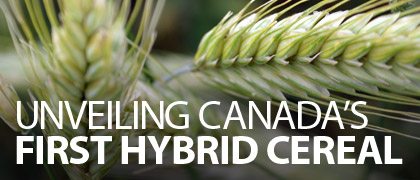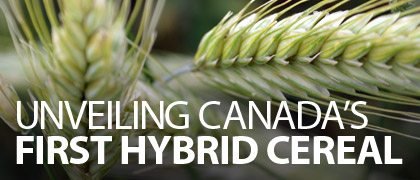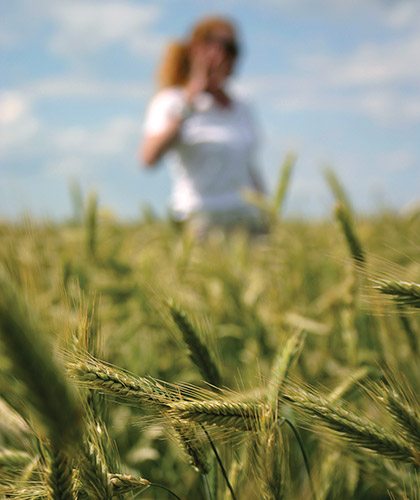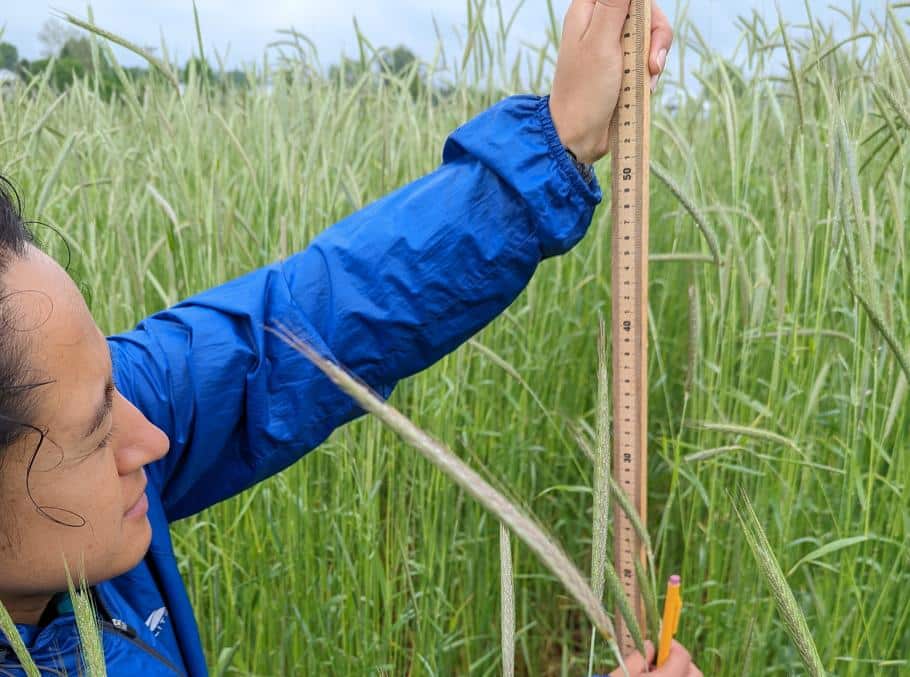
Brasetto hybrid fall rye promises to deliver 20 to 25 per cent higher yield than check variety.
The first economically viable hybrid cereal will be available to Canadian growers in 2015. FP Genetics CEO Rod Merryweather says Brasetto hybrid fall rye promises to deliver a 20 to 25 per cent higher yield than the check variety currently available.
Brasetto was developed by German-based KWS, the leading rye breeder in the world, which has provided FP Genetics with the first viable cereal hybrid ever registered in Canada.
“There have been attempts to create a hybrid winter wheat, but it’s never been economical,” Merryweather says. That’s because the cost of hybrid seed production for cereals have always been high and couldn’t be recouped with the yield increase growers could expect to get, which has typically been in the five to 10 per cent range.
Cereals have a very complex genome, which is why it has taken so long for the market to see a viable hybrid cereal. “Other cereal varieties are self-pollinated,” Merryweather says. “That’s the primary reason why you haven’t seen hybrid cereals. Rye, though, is open-pollinated, so KWS had an advantage right out of the gate.”
Aside from the increased yield, Brasetto comes with a number of other bonuses. “It has great uniformity, so growers can straight-cut their rye for the first time,” Merryweather adds. “That will save them time and money. And because it’s uniform, it seems to produce a higher quality grain with a considerably higher falling number, which is important to millers. Trials have been showing 80 to 100 points higher, giving you a much higher chance of getting into the milling market, which this is designed for.”
Denise Schmidt, senior territory manager for FP Genetics, shows off the new Brasetto hybrid fall rye test crop at Manitoba’s Kelburn Farm July 22.
A Different Kind of Rye
That’s sparking the interest of those with an eye on the industry. “It’s a game-changer,” says Jamie Larsen, Agriculture and Agri-Food Canada cereals researcher. “A lot of people who grow rye, grow it on lighter soil and that is kind of the measure of their yield potential. With the hybrid rye, it’ll yield quite well, so the targeted growing area isn’t necessarily only where traditional rye is grown, but potentially anywhere in Western Canada.”
Larsen adds that Brasetto could help spark some renewed interest in rye, as the cereal has become less popular with growers during the past couple of decades. “The crop has been gradually going down over the years, and some of that has to do with the dry falls we’ve had, but that’s generally been the trend,” Larsen says. Whether hybrids bring people back to growing rye, he says will ultimately depend on what growers are able to do with the grain.
A need to fuel market demand is something FP Genetics is keenly aware of. The company has partnered with Paterson Grain, a division of Paterson Global Foods, in a demonstration program for Brasetto rye. A few thousand acres of seed will be grown in 2014-15 and production from those fields will be delivered through Paterson Grain to end-use grain customers, who will mill it to determine its suitability for their product portfolio.
Merryweather is confident the program will fuel demand for the hybrid rye from millers and distillers — in turn encouraging Canadian farmers to begin growing Brasetto in 2015.
Marc Zienkiewicz














